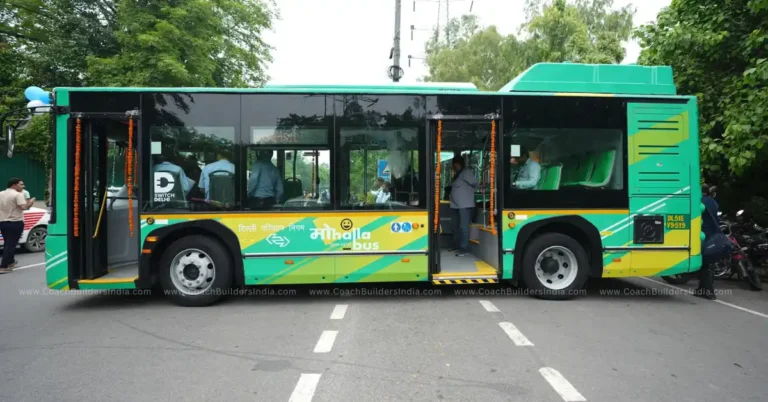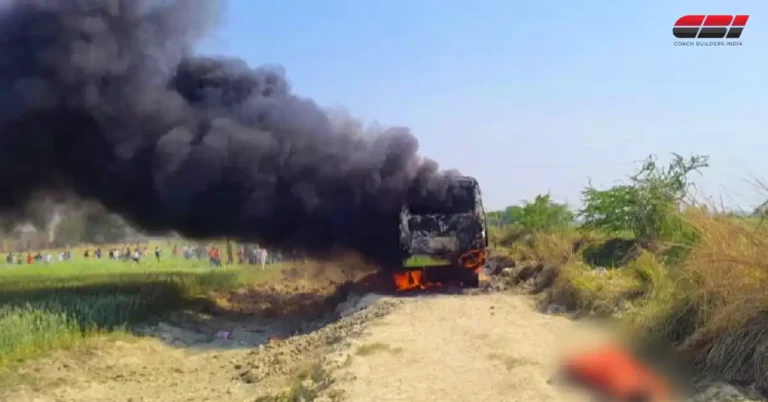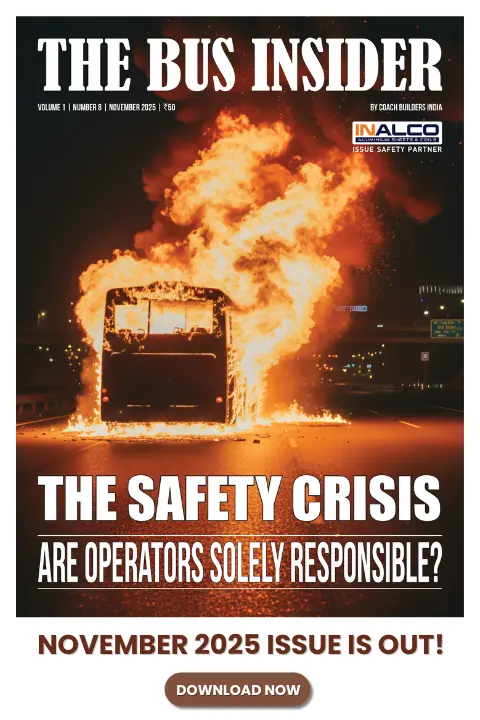Here’s How KSRTC Is Changing the Game With India’s First AI-Enabled Bus System
KSRTC is set to become the first transport corporation in India to implement an AI-powered system to optimize bus schedules, improve efficiency, and enhance passenger experience.

The Kerala State Road Transport Corporation (KSRTC) is stepping into a new digital era. With the launch of an AI-powered scheduling and operations system, the state-run transport giant aims to make bus services smarter, more efficient, and better aligned with real passenger needs.
This marks a major milestone for the integration of AI in the bus industry in India, positioning KSRTC as the first transport corporation in India to achieve full digital integration across operations, ticketing, and administration.
MIC E-Mobility’s Sanjiv Sharma Shares Vision for India’s Luxury Sleeper Bus Segment
Why KSRTC is Adopting AI
Kerala’s public transport network carries lakhs of passengers daily. But traditional scheduling often led to overcrowded routes, idle buses, and operational losses.
That’s about to change.
The new KSRTC AI Integration has been custom-developed with support from the Digital University of Kerala and the Kerala Startup Mission.
Its goal – analyze massive amounts of operational data to help KSRTC deploy buses exactly where and when passengers need them most — reducing waste, improving service, and increasing profitability.
IntrCity SmartBus Raises ₹250 Cr in Series D Funding Led by A91 Partners
How It Will Work
Here’s how the KSRTC AI system will transform daily operations:
- Data-Driven Decisions: The AI will analyze data from ticket sales, route performance, passenger volume, and travel time across 4,500+ schedules.
- Smarter Scheduling: Using insights from the past five years, the system recommends when and where buses should run — ensuring the right number of buses on each route.
- Peak vs. Off-Peak Optimization: During high-demand hours, more buses will be deployed. During low-demand periods, unnecessary trips will be reduced.
- Real-Time Integration: The AI is connected to KSRTC’s Chalo ticketing machines, providing live ticket data to constantly fine-tune schedules.
- Preventing Bus Bunching: The system ensures that long-distance buses don’t follow each other too closely, reducing redundancy and improving fleet utilization.
- Unified Dashboard: From ticket revenue to spare part purchases, courier services, property rentals, and budget tourism income — everything will soon be managed on one digital interface.
In simple terms, AI will be KSRTC’s brain, continuously learning and optimizing operations to serve passengers better while cutting costs.
EcoFuel Secures Diesel-to-CNG Bus Retrofitting Order for 850 Buses in Tamil Nadu
The Expected Impact
According to Karnataka Transport Minister K. B. Ganesh Kumar, this digital shift could reduce daily losses by nearly 45%. The system enables instant access to income and expenditure data, helping KSRTC monitor performance in real time.
He added that a complementary software will soon be introduced to further enhance financial transparency and operational control.
For passengers, KSRTC’s AI integration will result in:
- More reliable schedules
- Fewer delays
- Smarter deployment during rush hours
For KSRTC, it means:
- Lower operational costs
- Better utilization of its fleet
- A new benchmark for AI in the bus industry
Next-Gen Tata LPO 1822 Bus Chassis Launched for Intercity Operations
As KSRTC becomes the first transport corporation in India to achieve full digital integration, Kerala is setting an example for other state transport corporations in India.
The move shows how technology and public transport can come together to solve long-standing challenges, from overcrowding to inefficiency.
As buses run more efficiently and losses shrink, KSRTC’s digital transformation could inspire a nationwide shift toward smarter, AI-powered public mobility systems.
Catch the latest Bus Industry updates, Exclusive Interviews, Bus News, and International Bus News on Coach Builders India. Download the latest issue of the The Bus Insider magazine for more insights.







